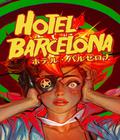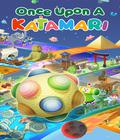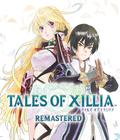Buy Death Stranding
Kojima Production's timed PS4 exclusive Death Stranding is a breath of fresh air in an industry that prefers to replicate the familiar rather than exploring new ideas. There is so much to unpack in Death Stranding that it's almost daunting: a Hollywood-level cast, dystopian world with supernatural elements, new "delivery" style gameplay, a story that's been mostly under wraps, and a new social multiplayer feature.
Before we jump in the thick of it, we were mindful of spoilers in writing this review. We will try to keep things vague beyond the early chapters and pre-released footage. If you're sensitive about story spoilers and/or would consider the mention of late-game gameplay systems to be a spoiler, I would encourage you to skip to the last paragraph to find out what we thought about Death Stranding in more general terms.
Let's get the most burning question out of the way: What is Death Stranding? If we listen to Kojima, it's a game about connecting people, the consequences of isolation, and the importance of human cooperation. That may not be our impression based on the pre-released footage, but that's certainly at the heart of it all.
In the near future, American society has been driven apart and isolated by the Death Stranding incident, which introduced BTs, or beached things, and timefall. BTs are beings that use beaches to travel between the worlds of the living and the dead, and they're the primary enemies in the game. Timefall is rain that causes things to decay. There is still a president of the United Cities of America (UCA), but attempts to reunite the country have failed because terrorist organizations stifle the efforts. We play as a porter named Sam, and our days are essentially comprised of supply runs between the isolated settlements. Sam has Death Obtained Organic Mutations (DOOMs) that are effective against BTs and allow him to come back from the dead. Other humans aren't as lucky. If someone dies and isn't cremated, the body creates a voidout, which is an explosion that leaves a massive crater.
A huge part of the game is spent understanding what's actually happening. Why was there a Death Stranding event, and how can humanity prevent another one from occurring? If you're familiar with Kojima, it won't come as a surprise that nothing is as it seems when the final credits roll. It's a well-written story that excels with a limited cast of characters who have intriguing backstories and motivations that are explored during cut scenes. The characters — Deadman, Die-Hardman, Mama and Sam — go through a heartwarming story arc. There is a genuine sense of progress in the story, and the character development and mission structure hold the player's interest for much of the 35- to 40-hour campaign. There are stretches where the story takes a back seat, and those were often the weakest part of the experience because they relied on the gameplay for hours at a time.
That's mainly due to how the game is designed. Every aspect of the game directly resonates with the story and world, and since everything is so interconnected, it's also inherently difficult to explain. The gameplay, story and world build a cohesive experience that makes complete sense and works well together. The best analogy is a concept album where every track delivers a specific message, evokes a feeling, or achieves a reaction under a shared theme. The isolated parts may work better or worse on their own, but together, they form an engaging experience that is unlike anything else I've played so far. That implies that some aspects are stronger than others, though.
As a porter, we traverse the barren landscape on foot to deliver food, materials, tools — and sometimes even humans. Sam frequently moves between outposts, accepting orders, and fulfilling them as quickly as possible. In the context of the gameplay, that means we have to strap a bunch of parcels to our body and hit the road. While we can load up Sam with goods, the game offers an option to automatically find the correct way to balance everything out. If we are overloaded or loaded unevenly, Sam can lose his balance, which could cause him to fall and damage the items. The shoulder buttons can balance Sam if he loses his footing or stumbles.
The center of gravity also impacts our walking speed and agility, especially on uneven terrain. Our stamina depletes when carrying heavy objects for a prolonged period of time, which causes us to go slower and be less agile. We can use a scanner to examine our surroundings for steep terrain, water depth and other features, so we can determine the best path forward. If we go through deep water or climb steep areas, we need to steady ourselves so we don't float away or slide down a hill, which would cause us to lose or damage our cargo. An endurance scale shows how long Sam can withstand extreme traversal methods until he gives up. Over the course of the game, we'll need to withstand rain, snow and storms, all of which make the experience more strenuous than regular deliveries.
We can eventually build structures, but first, the area needs to be connected to the Chiral Network — basically the internet. We can't build anything in the area until we've convinced the inhabitants to join the UCA, and we achieve that by completing orders and receiving likes, which improve a station's connection level. As soon as we're connected, we can build structures, and we can also see and use structures that other players have built. The more connections we perform and the better the connection gets, the more we level up and the more cargo we can carry on our backs.
The rough terrain may be one obstacle, but it isn't the only one. The world is littered with enemies (BTs, mules, terrorists) and timefall. Timefall causes structures, vehicles and the cargo on our back to gradually rust away. We have to move quickly through areas with timefall, and we should have some repair spray handy if we want everything to arrive in working order. Where there's timefall, there are BTs. The creatures are blind but can hear us if we get too close. We can spot them with the help of BB (our infant companion who senses the BT creatures) and our scanner. The first encounters are especially intense since we can only hold our breath and sneak by. The now-famous handprints from the trailers appear when the BTs close in on our location, and the ground turns into a puddle of tar as several BTs try to drag you in. It's a great visual display that's frightening as hell. We can shake them off and resist for a short while, but if we lose the battle, they drag us into a brief BT boss battle. If we win, we can move on, but dying is a different story.
Death Stranding isn't a conventional game. We can see a "game over" screen in certain scenarios, but our own death is not one of them. Every time we "die," we return under water, and we must swim to our lifeless body to resurrect it. When a BT boss wins, they consume us, and we still come back, but a voidout and a large crater mark where we lost the battle. Since this only occurs in areas without special structures or mission-critical objects, the craters are cosmetic and don't impact the gameplay, but they are a permanent reminder of our failure.
Eventually, we find ways to fight the BTs, mainly by putting Sam's blood into grenades. Before long, we can use blood-filled ammunition and upgrade to stealth kills. During the BT fights, we should also be concerned about the well-being of BB. Overexposure to stress factors in a short amount of time may lead to losing BB until we stop and rest, and we'll be unable to sense BTs during that time. Regardless, the BT encounters become easier as the game progresses.
At the best of times, Death Stranding feels like we're conquering and filling up a beautiful but empty world. We start with nothing, but once we can build structures, they make previously strenuous paths a breeze to traverse on foot or in vehicles. One of the most interesting aspects of the title is the Social Strand System, which lets people see and share objects across different player worlds. For example, walking the same paths creates footpaths, and we can build streets to facilitate deliveries with vehicles. Players can place signs that can serve as waypoints, restore stamina, or boost vehicle speed.
As we connect new settlements to the network and improve their connection level, we gain access to new structures. It starts with simple post boxes to store things and share items with other players, but soon, we can build generators to replenish our batteries, and timefall shelters can protect us from the corrosive rain. We can even build safehouses for fast travel or zip lines to travel between mountains. The nature of the Social Strand System means that we do not have to finish a structure on our own. Once the foundation is built, other players can contribute resources to finishing the building. If we need a specific item at a certain location, we can make delivery requests for other players to fulfill.
While I love the characters, story and world, the gameplay took me through the paces. At regular intervals, the story grinds to a halt and we must complete additional delivery runs before we can move on. When you need to redo delivery routes before you're connected to the network, you must traverse tricky terrain with rudimentary tools because you can't build anything yet, and that can become an annoying chore.
We're basically performing many of the same tasks over and over again, but the story provides ample motivation to push through. If you enjoy games that keep you busy, even if the tasks aren't particularly challenging, Death Stranding will scratch that itch. I've spent hours paving streets, moving resources, finding the quickest delivery routes, and building structures to make my own and other players' lives easier. It can be addictive and rewarding, but it can also be tiresome because there isn't much variety in the deliveries, even the tougher ones.
Death Stranding has four difficulty levels — very easy to hard — but none are challenging, which likely comes with the territory of being unable to die and getting help from other players. During the time hours I spent completing the story on the intermediate difficulty level, I died a total of four times, including the final boss battle. This is not a challenging experience, and that will put off some players. I switched to the hard difficulty later on, but it still wasn't very challenging. There are many systems at play, but none seem to punish one's graver missteps.
Since gameplay is a huge chunk of what you're doing, your ability to have fun with these systems will determine if you'll enjoy Death Stranding. Delivering isn't all that you do. Prepare to spend about 30% on the story and cut scenes, 65% on delivering, and 5% on other elements. In the second half of the story, the game introduces more boss encounters and set pieces that play differently, like the previously teased shooting segments in WWI, WWII and the Vietnam War with the mysterious character, Cliff. These segments are few and far between, but they are a welcome change of pace. I found the linear shooting segments to be as good as, if not better than, some of the more prolific shooter games.
Death Stranding excels in its presentation. The game has a fantastic soundtrack that frequently plays in the background on longer journeys, and it perfectly captures the feeling of being alone on the road with nature stretching ahead as far as the eye can see. It adds yet another layer of immersion to an already immersive game. Add to that the stellar work with the game engine and motion capture, and Death Stranding is one of the best-looking and -sounding titles this year. Character models are close to lifelike, and there's an amazing amount of detail in the animations. The voice acting is similarly stellar, and cut scenes often feel real. This extends to the world, which may "only" be filled with mountains, rivers, rocks and the occasional cargo and structure, but the impeccable lighting and detailed textures make it look photorealistic. The draw distance is insane, but there's a noticeable pop-in of textures and objects as we move through the world. Given the scale and draw distance, we can see snowy peaks and swampy valleys from far away and plan routes accordingly.
Death Stranding is an incredibly polished experience. There'll likely be a day one patch and servers will get maintenance before release, but I cannot remember the last time I played a game that was so devoid of glitches or bugs. In our 40+ hours with the game, we only stumbled upon one issue that was partly our fault when we forcibly clipped two trucks into each other. Otherwise, the game ran smoothly without any issues, no matter what was occurring on-screen. Equally impressive is how well it runs on the PS4 Pro with checkerboard rendering to 4K and a rock-solid 30 fps that looks like much more due to good frame pacing.
Death Stranding is a remarkable experience. Full stop. It's the first game I've played where everything from the story to the gameplay work together as a truly cohesive product. The social online system is intriguing and works well, and I'm curious to see if this idea will be explored further in future games. Everything about Death Stranding feels organically interwoven, which makes the experience all the more impressive and enriching. That also means that not all parts of it are excellent. The delivery gameplay is good and occasionally great, but given its pacing and setup, it doesn't always serve the game well, especially given the low difficulty level. Setting aside those minor gripes, Death Stranding is a new and brave direction for a game, and it pays off in many ways. This may not be for everyone, but everyone should try it out if they have the chance.
Score: 9.1/10
More articles about Death Stranding











 Death Stranding is an open-world action game that follows the story of Sam Porter (Norman Reedus), who must travel across a ravaged wasteland and save humanity from impending annihilation.
Death Stranding is an open-world action game that follows the story of Sam Porter (Norman Reedus), who must travel across a ravaged wasteland and save humanity from impending annihilation.
























































